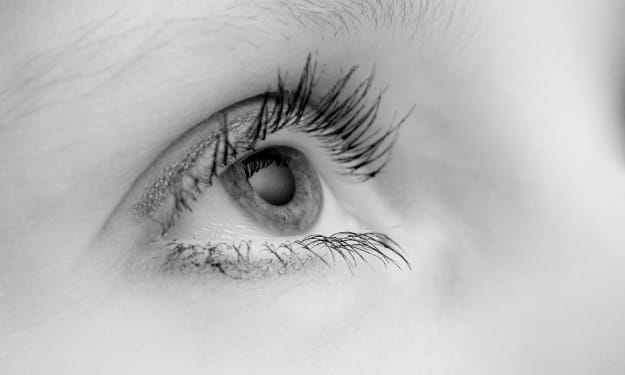Class Represented in Perrault’s Puss in Boots
Don't be fooled . . . it isn't a kids' tale

The Puss in Boots tale is thought to have first been written by Giovanni Straparola around 1550-1553 called Constantino Fortunato and was taken up by other authors including Giambattista Basile around 1634, Charles Perrault in 1697 and The Brothers Grimm in 1812 as well as adaptations by Disney and Dreamworks.
Straparola's Tale: The Original Puss in Boots
A fairy cat is left to the youngest after a parent dies whilst the older brothers were left more useful things to gain themselves a way to survive that they would not share with the youngest. The cat is essential to Constantino's survival and eventually lands his master in a position of claiming lands, wealth and a castle as his own deceiving the King and the Princess. With what seems like a classic twist of events now, Constantino goes from pauper to King as his new wife’s father meets an untimely death. Unfortunately, this leaves the message of this story being that the poor can only better themselves through miraculous means.
Since Straparola’s tale was used as the base for other Puss in Boots adaptions, this message seems to be common in all versions. Another common theme is that the boy who inherits the cat usually isn't very intelligent; the cat is always the mastermind. In Basile's version, a clear theme or message comes across that the peasants can't be helped for they will always be stupid and small-minded.
Jack Zipes, professor in literature and cultural studies, states that as the oral tradition of fairytales became a literary one, the stories were fully adapted to amuse courtly and educated middle-class readers. It is no surprise the entertainment value to these classes with regards to Puss in Boots’ and the messages it sends about peasants.
Perrault’s Tale: Class Differences
Class differences that are suggested in Perrault’s Puss in Boots are as follows. At the beginning of the tale:
- The boy is nameless, perhaps because a name and title is only really important and respected by the nobility
- The boy has a miserable inheritance
- Life is about survival. The boy says "Once I've eaten my cat and made his fur into a muff to keep my hands warm, I shall just have to starve to death." Not only is his first thought survival, but so is the cat's as he immediately tries to convince the boy that he can be useful and help them survive provided he has a pair of boots and a bag
- The boy believes himself to have no food, no means of production or providing a service to people
- The boy does not interact socially, the cat does most of the speak in social interactions on his behalf
His life at the end of the tale is in stark contrast to this.
- He is given a name, an identity, dressed in fine clothes, presentable, and therefore becomes the owner of land, workers, and a castle.
- He marries a princess and lives in comfort instead of worrying about surviving.
- He becomes more socially involved as he invites the King into the castle and entertains him.
- The last line of the tale reads "the cat became a great lord, and never chased a mouse again except to please himself."
Clearly, there is significant class difference shown between their lives at the beginning and the end. It suggests that the lives of the lower class are primarily concerned with basic needs and surviving whereas the upper classes can afford to socialise, pursue romantic interests, entertain others, and spend time leisurely rather than using effort to chase down food.
Climbing the Social Ladder
The boots are definitely an important inclusion in Perrault’s fairytale as they are essential to climbing the social ladder. A man, or in this case a cat, wearing a nice pair of boots is a sign of wealth and respectability. With Charles Perrault involved in the court of Louis XIV and the Palace of Versailles it is no surprise that the importance of being well-dressed was recognised by the writer. For a puss in boots, the doors of the King's castle were open to him and he was received by the King himself. The cat's posture is interesting as well. He only wanted two boots, not four, and walks on his two back legs as if trying to seem more gentlemanly rather than animalistic.
The use of wit and language in the climbing of the social ladder is also included in the tale with the clever cat. It is through the cat's clever, deceptive and purposeful words that they gain help from the King, convince others to confirm their nobility and kill the ogre. This mastery of words and being clever and witty is not usually associated with the peasantry or lower classes, which is supported by the cat taking on this role instead of the boy in the tale.
Who is the Real Master?
Puss in Boots is a fairytale about exchange. Exchange of boots for the cat's services, rabbits for words of praise from the King, and the cat becoming the boy’s master in exchange for a name: Marquis of Carabas. In the beginning there is a contract between the boy and the cat where the boy gives boots and a bag in exchange for the cat's services and help. This social dynamic is flipped when the cat asked his 'master' to go swimming. The boy should have no reason to obey this request; the cat cannot offer him anything substantial that he is aware of, and he knows not the purpose of this request. Despite this, he obeys and the cat becomes the master of the boy. Despite the boy gaining a title and identity the cat is clearly in control! This interpretation may also be supported by the title of Perrault's story - The Master Cat.
Is There a Moral?
“Although the benefits are great
For one who owns a large estate
Because he is his father’s son,
Young men, when all is said and done,
Will find sharp wits and commonsense
Worth more than an inheritance” (Perrault)
This is one of the morals of the story that is stated at the end of the tale. Earlier I mentioned that the story could be seen as being entertainment for the aristocratic or upper classes with messages about the poor only being able to ascend the social ranks through a miracle and being too dumb to be helped. This moral put forward by Perrault himself suggests that what is more important than family class, who your father is, or what you then inherit, is actually something that can be achieved and practiced by all. The moral seems to equate all people, not favouring one social class over another, simply stating that sharp wits and commonsense will get you further in life and is worth more than family ties.
However, it does still recognise that the benefits are great if you own a large estate for being born into a wealthy family.
“If the son of a miller, in ten minutes or less,
Can take a girl’s fancy, and make a princess
Look longingly at him, it proves an old truth:
That elegant clothes on a good-looking youth
Can play a distinctly significant part
In winning the love of a feminine heart” (Perrault)
This moral is in favour of the middle to upper classes as it suggests that owning nice clothes and looking handsome and presentable are very important in courtship and marriage and social standing. Even the son of a miller can win the heart of a princess if he is dressed like a nobleman. But, in reality, it is only the wealthy that would have had the opportunity to do this. This moral does also imply that women are very aware of social class when being courted. With marriage being a significant tool to climbing the social ladder for women of this time period, of course the clothes of a nobleman can win a woman's heart.
To summarise, Puss in Boots is written in favour of the middle-upper classes as it provides entertainment through the insinuations that the lower classes cannot achieve social success without a miracle, and through the use of the symbolism of the boots and witty language which are more associated with the wealthy than the poor. Both of the morals stated at the end of the story recognise class differences and clearly acknowledge the benefits provided by being born into a wealthy or well-off family.
About the Creator
Eloise Robertson
I pull my ideas randomly out of thin air and they materialise on a page. Some may call me a magician.






Comments
There are no comments for this story
Be the first to respond and start the conversation.